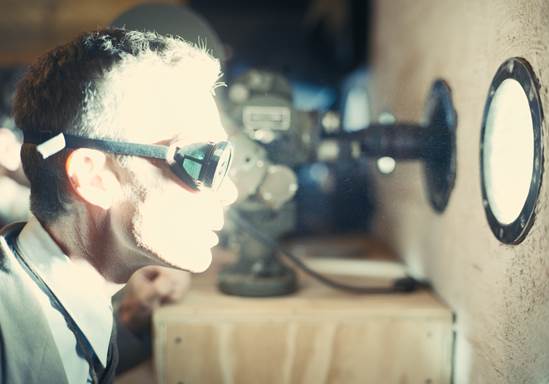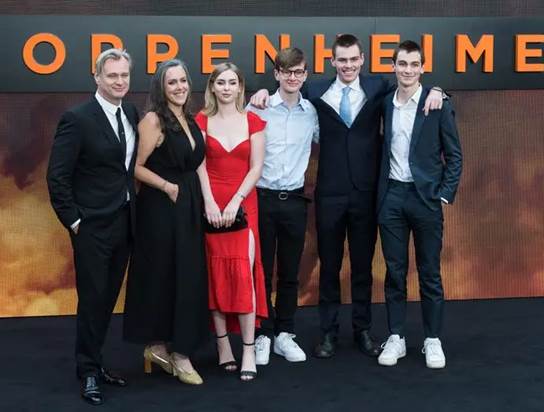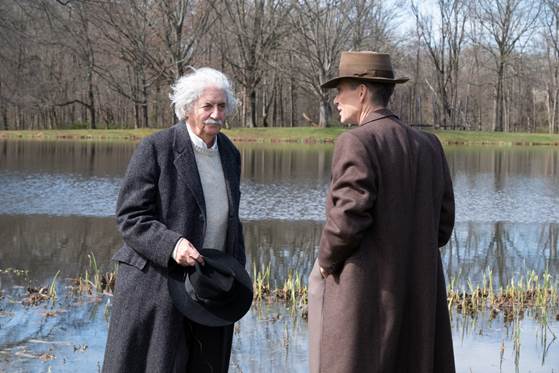The Trinity test was executed as a fusion of practical effects and cinematic techniques. “From the very beginning, I identified that the Trinity test would be one of the most crucial components of this film,” Nolan stated.
“I had previously used a nuclear explosion in ‘The Dark Knight Rises’, which left viewers feeling uncomfortable. However, I also realized that with an event as significant as Trinity, it had to be captured meticulously by modern filming techniques. A computer-generated image (CGI) could never replicate the horror experienced when watching the actual recorded footage. And that is the challenge.”
The team executed various practical effects using a combination of explosives, propane, aluminum, and magnesium on set. The experiments—involving dropping bowling balls, hurling sand against walls, and mixing magnesium solutions to create light—were filmed using advanced camera techniques, capturing the super slow-motion and many different frame rates.
These were shot at high speed from multiple angles, then layered with practical visual effects to create the “cloud of smoke” that entered the frame.
The film includes a scene with physicist Enrico Fermi witnessing the Trinity test. Fermi is known for Fermi’s Paradox, a thought experiment that questions why humans have not observed evidence of intelligent life elsewhere in the universe. One possible reason for this could be that intelligent life has the potential to self-destruct through self-destructive behaviors. The creation of nuclear weapons—especially when Edward Teller and other physicists worried about the bomb’s effects on the planet—was one of those moments that changed humanity’s course in history.
A cameo from a notable physicist in the film
Alongside the primary focus on the creation of atomic bombs, Oppenheimer is also known for his research related to the universe. His contributions to theoretical physics include important theories regarding the nature of the universe. One of his most notable theories was in 1939 when he wrote an article titled “On Continued Gravitational Contraction,” predicting the existence of black holes.
The article was initially overlooked. Oppenheimer indicated his mathematical formulas for his theory could be validated by an astronomer.
The astronomer mentioned later was Stephen Hawking, a theoretical physicist and mathematician, whose research and theories became the foundation for Christopher Nolan’s film Interstellar (2014).
The involvement of a uniquely historical actress
Christopher Nolan gathered an ensemble cast featuring all-star talents familiar to audiences. The cast of Oppenheimer includes multiple Oscar winners (Sir Kenneth Branagh, Matt Damon, Rami Malek, Casey Affleck, and Gary Oldman) and three nominees (Robert Downey Jr., Tom Conti, and Florence Pugh).
In a film filled with an all-star cast, the aim was to provide the best experience for viewers, including the supporting actors who also contributed their heartfelt performances.
A special guest role appears in the scene where Oppenheimer is met by the people of Los Alamos, who greet him as the “father” of the bombs dropped on Hiroshima and Nagasaki.
In a chaotic atmosphere, the scientist seems immersed in the horror of the consequences of his research. Among them is a young woman playing a supporting role, whose skin is shown to be scorched. This role was played by Flora Nolan—Christopher Nolan’s daughter.
In an interview with The Telegraph, Nolan discussed his choice of this actress, noting: “If you create a strong emotional connection, it will also destroy those closest to you. I believe this is the strongest way to realize that.”
Filming in locations where two geniuses worked together
During the final stages of the project, Albert Einstein publicly regarded Oppenheimer as a sacrificial lamb due to his association with the Atomic Energy Commission. The two had their first meeting during the academic journey at Göttingen University in the 1920s.
At that time, Einstein was a famous physicist and a leading figure in theoretical physics. Oppenheimer and Einstein recognized the complexities in the theories of contemporaneous scientific pioneers and expressed concerns about the development of nuclear weapons.
They shared mutual concerns regarding political and social issues, particularly the ethical implications of nuclear energy and international collaboration. Despite their common goals and collaboration, Oppenheimer and Einstein held differing views on certain scientific and political matters.
The film was also recorded at the Institute for Advanced Study (IAS) at Princeton University, where Oppenheimer and Einstein worked together after World War II, utilizing the IAS building where Oppenheimer previously served as director.























